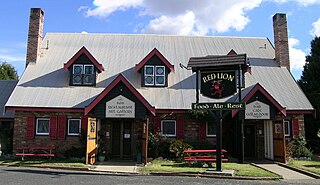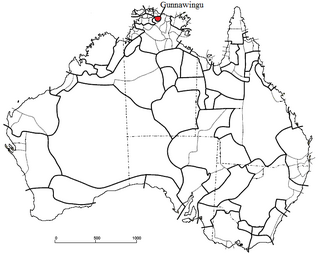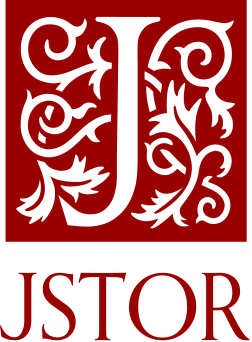Country
The Banbai were a Northern Tablelands tribe whose lands are estimated by Norman Tindale to have covered some 2,300 square miles (6,000 km2), taking in Ben Lomond, Glencoe, Marowan, Mount Mitchell, and Kookabookra. They were also present along the Boyd River valley.

The Northern Tablelands, also known as the New England Tableland, is a plateau and a region of the Great Dividing Range in northern New South Wales, Australia. It includes the New England Range, the narrow highlands area of the New England region, stretching from the Moonbi Range in the south to the Queensland border in the north. The region corresponds generally to the Bureau of Meteorology forecast area for the Northern Tablelands which in this case includes Inverell although it is significantly lower in elevation.

Ben Lomond is a village on the Northern Tablelands in the New England region of New South Wales, Australia. The village is situated 6 km off the New England Highway between Armidale and Glen Innes. It was located in the Guyra Shire local government area until that council was amalgamated into the Armidale Regional Council on 12 May 2016, with parts of the surrounding district in Glen Innes Severn Shire and Inverell Shire. It is primarily a farming area, with most of the residents involved in sheep, cattle and grain farming.

Glencoe is a village on the Northern Tablelands, New South Wales, Australia. It is part of the Glen Innes Severn Shire Council local government area. It has an elevation of about 1,150 metres (3,770 ft). At the 2006 census, Glencoe had a population of 211 people.
This page is based on this
Wikipedia article Text is available under the
CC BY-SA 4.0 license; additional terms may apply.
Images, videos and audio are available under their respective licenses.
The Gidabal, also known as Kitabal and Githabul, are an indigenous Australian tribe of southern Queensland, who inhabited an area in south-east Queensland and north-east New South Wales, now within the Southern Downs, Tenterfield and Kyogle Local Government regions.

The Gunwinggu people are a tribe of Australian Aboriginal people, forming part of the Bininj Gun-Wok peoples, who live to the east of Darwin, Northern Territory.

The Dadi Dadi or Tatitati are an Australian Aboriginal tribe whose traditional lands are located along the southern banks of the Murray River in Victoria Australia.
The Anēwan, also written Anaiwan/Anaywan, are the traditional owners of the land around Armidale and the New England tableland in New South Wales.
The Ngintait, or Ngindadj, were an indigenous Australian people of the northwest corner of the state of Victoria, and partly in South Australia. 9 people, all of one family, claim descent from the tribe, which was dispersed in the 19th century.
The Totj were an indigenous Australian people of far northern Queensland.
The Mbewum were an indigenous Australian people of the Cape York Peninsula of northern Queensland. They were dispossessed and became extinct soon after colonization.
The Tjial were an indigenous Australian people of the Northern Territory who are now extinct.
The Kuyani are an indigenous Australian people of the state of South Australia who speak or spoke the Kuyani language.
The Araba were an indigenous Australian people of Queensland.
The Wakara or Wakura were an indigenous Australian people of the state of Queensland.
The Maikulan were an indigenous Australian people of the state of Queensland. They have sometimes been confused with the Maithakari.
The Kunggara, also known as Kuritjara, are an indigenous Australian people of the southern Cape York Peninsula in Queensland.
The Nggamadi were an indigenous Australian people of the Cape York Peninsula of northern Queensland.
The Ngundjan (Ogh-Undjan) were an indigenous Australian people of the state of Queensland.
The Kokomini (Gugumini) are reported to have been an indigenous Australian people of the state of Queensland, though some indications suggest the term may refer to a loose confederation of tribal groups.
The Kula, also known as the Kurnu, were an indigenous Australian people of the state of New South Wales.
The Gudanji, otherwise known as the Kotandji or Ngandji, are an indigenous Australian people of the Northern Territory.
The Wambaya are an indigenous Australian people of the Northern Territory.
The Mudburra are an indigenous Australian people of the Northern territory.








